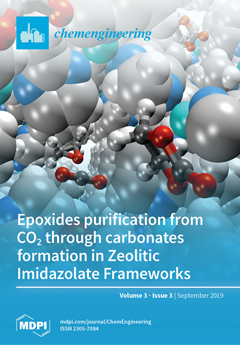In this study, a pilot biotrickling filter (BTF) was installed in a wastewater treatment plant to treat real biogas. The biogas flow rate was between 1 and 5 m
3·h
−1 with an H
2S inlet load (
IL) between 35.1 and 172.4 gS·m
−3·h
−1. The effects of the biogas flow rate, trickling liquid velocity (
TLV) and nitrate concentration on the outlet H
2S concentration and elimination capacity (
EC) were studied using a full factorial design (3
3). Moreover, the results were adjusted using Ottengraf’s model. The most influential factors in the empirical model were the
TLV and H
2S
IL, whereas the nitrate concentration had less influence. The statistical results showed high predictability and good correlation between models and the experimental results. The R-squared was 95.77% and 99.63% for the ‘
C model’ and the ‘
EC model’, respectively. The models allowed the maximum H
2S
IL (between 66.72 and 119.75 gS·m
−3·h
−1) to be determined for biogas use in a combustion engine (inlet H
2S concentration between 72 and 359 ppm
V). The ‘
C model’ was more sensitive to
TLV (–0.1579 (gS·m
−3)/(m·h
−1)) in the same way the ‘
EC model’ was also more sensitive to
TLV (4.3303 (gS·m
−3)/(m·h
−1)). The results were successfully fitted to Ottengraf’s model with a first-order kinetic limitation (R-squared above 0.92).
Full article





